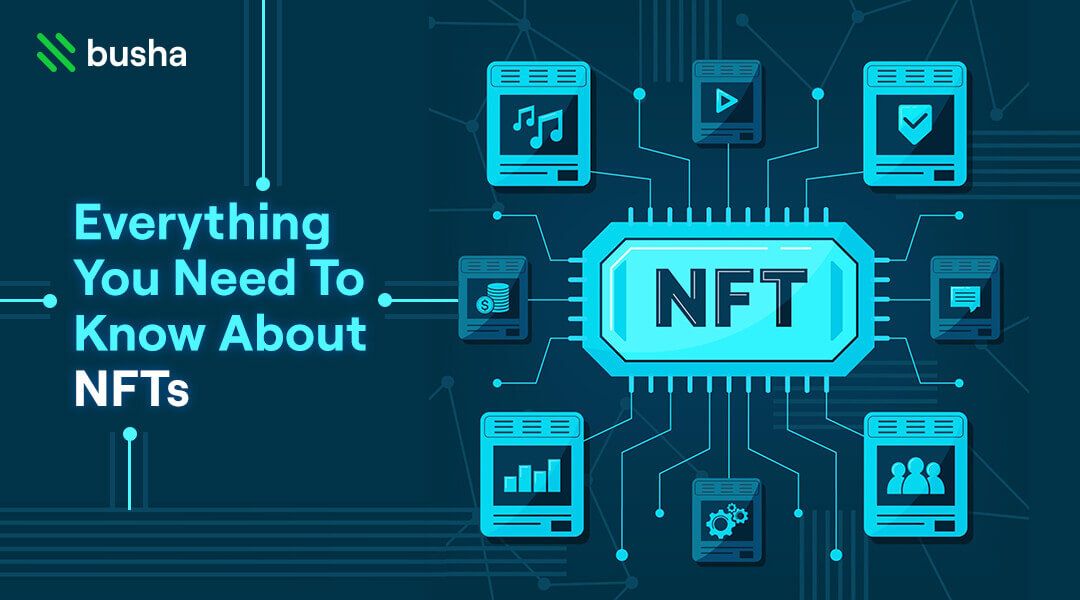
Everything You Need To Know About NFTs
What is an NFT?
NFT stands for “Non-Fungible Token. They are unique blockchain-based tokens that can represent practically anything (art, music, property, names, books, paintings) —including physical assets. Unlike traditional currency notes and cryptocurrencies that are “fungible”- traded, exchanged, have similar value across all holders and divisible, NFTs are “Non-fungible”.
Non-fungible means;
- Unique attributes or value
- Can’t be divided or shared
- Different token equals different value
- No two tokens are the same
- Smart contracts on blockchains prevent the duplication of NFTs and publicly visible blockchains
How do NFTs really work
Just like a Picasso art piece that takes rigorous amounts of hours, creativity, variety of brush strokes, colors and elements to create, NFTs go through the same rigor. These physical assets are created and authenticated to be one and original from fakes and duplicates.
Many NFTs operate depending on various blockchains on which they are created. The Ethereum Blockchain still remains the most popular network housing these unique digital assets with its ERC-721 and the most recent ERC-1155 standards. Other blockchains include TRON (TRC-721), EOS, Tezos, and Solarium
Each blockchain platform has a series of capabilities that give Non-Fungible Tokens unique attributes to perform differently. With smart contracts, each unique digital asset is given one-time characteristics that can never be altered.
The value of an NFT depends on how much collectors are willing to pay for it (auction) or how much a creator is willing to sell each for (floor price). When in ownership of one or more NFTs, collectors may have real-world rewards, tickets, or brand offerings attached to their ownership of these unique tokens.
For instance, The Bored Apes collection has 10,000 NFTs with a community called Bored Ape Yacht Club (BAYC).

This club is exclusively open to individuals who own one or more of their NFTs. With celebrities like Post Malone, Don Jazzy, Steph Curry, and Snoop Dogg as owners of a couple of these assets, fans or followers who also own any of these collectibles can confidently sit in the same room yacht as these celebrities for a glass of beer.
Benefits of NFTs To Creators and Collectors
To Creators; NFTs are not only a way to express their creative and innovative element, but also to show authenticity and share the originality of their works with followers, the community, and show appreciation to collectors.
- Life long Royalties are a big plus for creators as smart contracts allow them to earn profits off future sales of their work. This translates to a lifelong system of earning, as NFTs can be sold from one owner to another.
- Access to Global Markets: The internet still holds an unbeatable record for opening up local brands, creators, artists, profiles, and businesses to international audiences and this is the same for NFTs. For creators in Nigeria, their works could reach as far as Asia within minutes and get bought for the same value as they require without the aid of foreign exchanges, interpreters, bank authorizations, or added fees.
To Collectors; Non-Fungible tokens don’t just mean ownership of a valuable digital asset, but also a ticket to future decision-making processes, exclusive memberships, access to limited resources and communities, and most uniquely, “Bragging rights”. In a world where pirated or fake assets sell cheaply and easily, authentic digital assets like NFTs are worth more than their initial asking price as ownership and usage change.
What then is the difference between a cryptocurrency and an NFT?
Before we talk about their differences, here are a few similarities both digital assets share.
- Both cryptocurrencies and NFTs are housed, validated, and secured by actions within a blockchain and governed by smart contracts.
- Both digital assets can be traded, stored, and exchanged for value.
- Cryptocurrencies are rewards of information validation within a blockchain and NFTs are bought and sold using these cryptocurrencies. Both digital assets are co-dependent on blockchain technology for sustainability.
How they differ;
Cryptocurrencies are fungible- they can be shared, divided and aren’t unique to the holders as one holder has exactly the same token as another with similar features. NFTs are non-fungible, meaning that one piece of artwork or collectible made even by the same creator is completely different from another piece they create. Each NFT is tokenized to contain unique characteristics that can never be duplicated within or outside a blockchain.
An example; 1BTC = 1BTC anywhere across the globe. Whereas, Bored Ape #713 doesn’t equal Bored Ape #714
Easy as this one difference is to say, both cryptocurrencies and NFTs are a similar specie of the blockchain ecosystem. Where the former serves as a currency for buying and selling within the ecosystem, the latter is one of a million possible opportunities that exist and is financed by the activities within the crypto market.